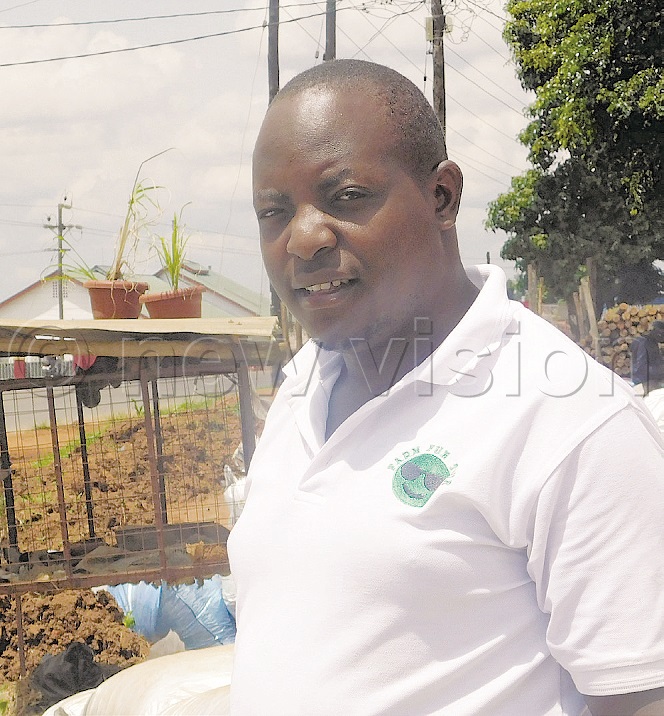By Joshua Kato
His parents named him Allan Iga. But after his studies and acquiring a bachelor’s of science in agriculture extension, he earned a new name – Mr Fodder-man!
This was after he ventured into solving a major challenge that cattle keepers faced – a lack of pasture and fodder.
His office is in Matugga, Wakiso district. Fodder-man is a ‘beehive’ of pastures!
“I worked for several organisations until I quit to start my own company in 2017. There are many farmers who want to keep cattle but do not have space to grow pastures. So, I decided to help these people get feeds for their animals. I also advise farmers on nutrition of their cattle,” he says.
Iga grows pasture including napier, maize, brachiaria, chrolis gayana and processes it into silage or hay for sale. He also processes molasses from sugar waste, which is also livestock feeds.

Iga started his venture by visiting Kenya to benchmark pasture growing and generally livestock nutrition. He grows pasture on over 10 acres.
“I also help farmers process their own pastures into hay or silage,” he says.
Iga acquired equipment used to process the grass that includes silage choppers and hay balers.
He also works with Valeria Farm, a fairly modern dairy enterprise in Mukono district.
Napier In Uganda, napier or elephant grass has been crossed with other crops to improve growth rate as well as protein and sugar content.
He says two notable kinds are sweet napier (a combination of napier and sugarcane) and pakchong (napier and millet).
He grows both. Pakchong has a higher protein content, while sweet napier has a higher sugar content than indigenous variety.
Both have improved dry matter yield. The higher the dry matter in feeds, the more a cow benefits because it fills the stomach faster and provides energy.
Iga says yields of pakchong on good soils in Thailand reach 600 tonnes per acre annually.
Dr Jolly Kabirizi, a livestock nutritionist, says in Uganda, average production is 150 tonnes.
Chloris gayana Iga grows chloris gayana, also known as Rhodes grass. This is a perennial or annual tropical grass.
He says it is used in permanent pasture or as a short to medium term pasture to restore soil structure, improve organic matter levels and reduce nematode attacks.
Iga adds that the grass makes good hay if harvested before flowering.
He says growing the grass requires rainfall of 500- 1,500mm per year with fertile soils. A well-prepared seedbed is required to create a favourable environment in which seeds will germinate.
If vegetative material is being used, it is good for starting new roots and shoots. If one’s land is sloppy, Iga advises working across it.
Avoid an unnecessarily fine seedbed, which may render the soil highly susceptible to water and wind erosion.
If the soils are shallow and likely to be highly susceptible to erosion, leave strips of undisturbed land across the slope to reduce the potential for soil erosion.
“It takes three months to mature,” he says.
What you need to grow pasture
- Land: At least one acre
- Seedlings of the various pastures
- Knowledge on how to manage the pastures
- Market for the pastures





